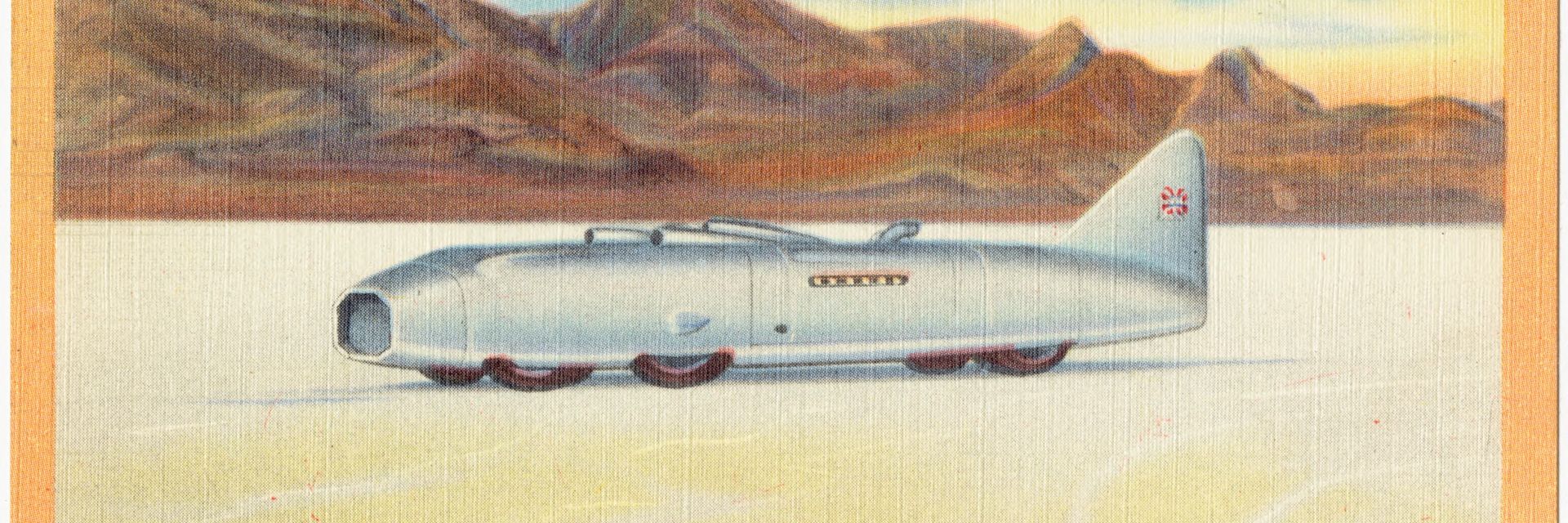The quest for the land speed record has gone supersonic.
◊
Fast, faster, fastest. Since the dawn of the industrial age, humans have been pushing the physical and technological limits of their machines to find out just how fast they can go. The first train rolls down the track – but let’s make it go faster. The first self-powered automobile rambles down a rutted road – but let’s make it go faster! The Wright brothers get their flying machine up into the air – but, by gosh, let’s make it go faster!
Whew! Speed may kill, but it’s a fix we seem never to get enough of.
Can Guy Martin set a new world speed record for a motorbike? Watch Guy Martin: Fastest Man on Two Wheels? to find out.
For velocity addicts, one of the most alluring goals has been to go as fast as possible in a vehicle that remains on the ground. Here, in ascending order of the speeds they have achieved, are five of the fastest such rides ever produced.
1. North American Eagle Project (522.783 mph / 841.338 km/h)
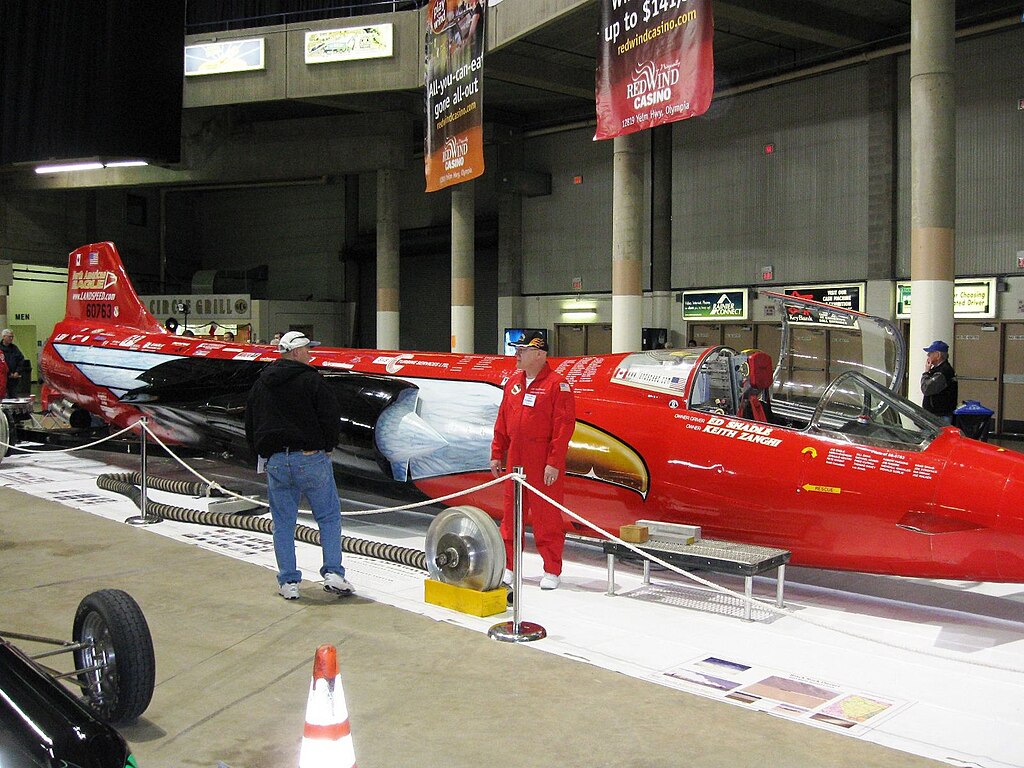
(Source: Wikipedia)
Born from the ambition to convert an F-104 jet fighter into a land speed contender, this project flirted with the edges of what’s possible on land. Its Canadian-American team had hoped to break the sound barrier and perhaps the land speed record, but the project ended tragically on August 27, 2019, when it crashed, killing driver Jessi Combs. She was posthumously credited with the fastest land speed achieved by a woman.
2. Spirit of America – Sonic 1 (600.601 mph / 966.547 km/h)
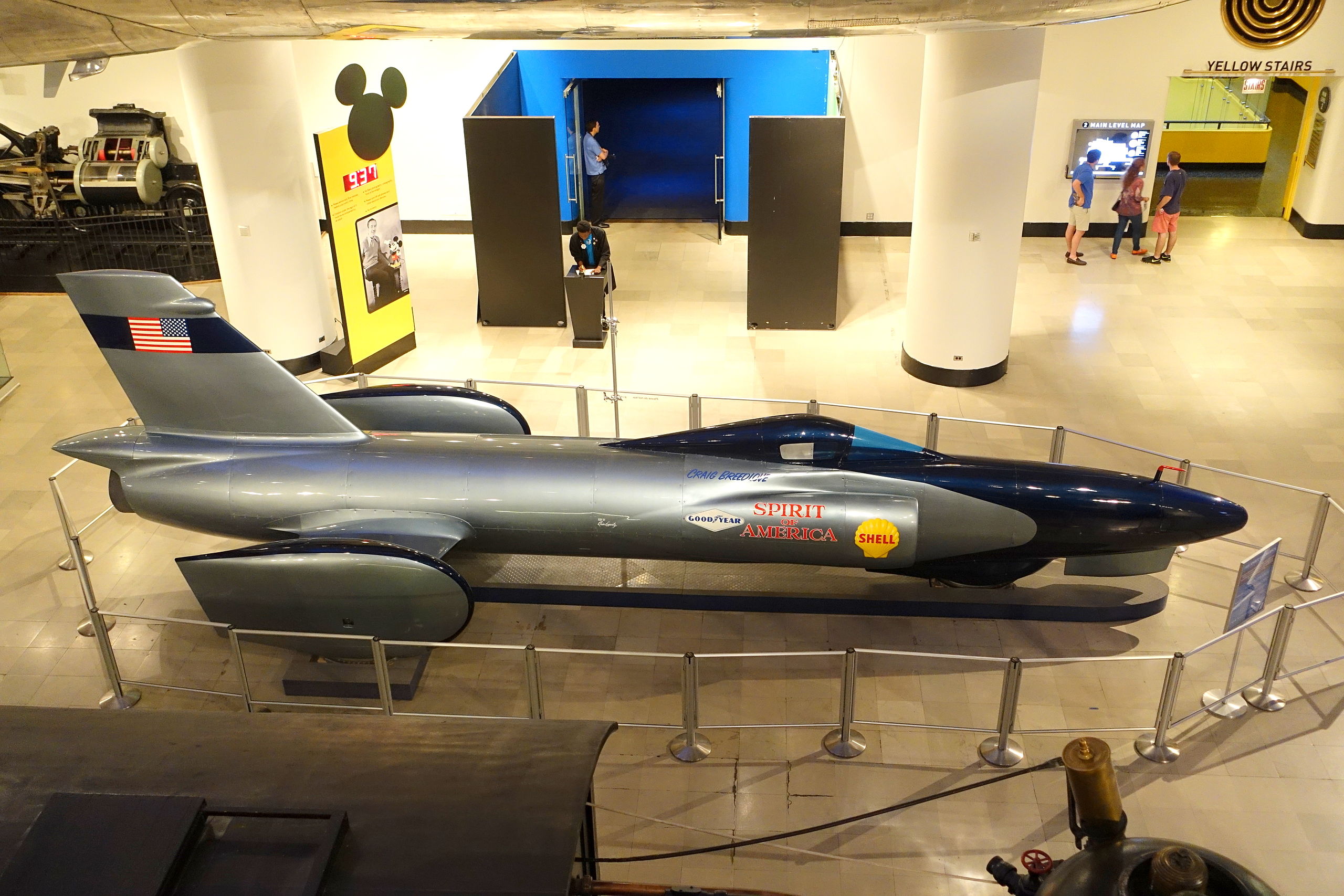
(Credit: Daderot, via Wikimedia Commons)
In 1965, Craig Breedlove captured the world’s imagination by driving (or should we say, piloting) Spirit of America – Sonic 1 faster than a typical private business jet. In fact, it was powered by a General Electric J79 jet engine, a type used in military aircraft. The Sonic 1, with its three-wheel chassis, aerodynamic design, and powerful propulsion, pushed the limits of 1960s speed and technology.
Bloodhound LSR (628 mph / 1011 km/h)
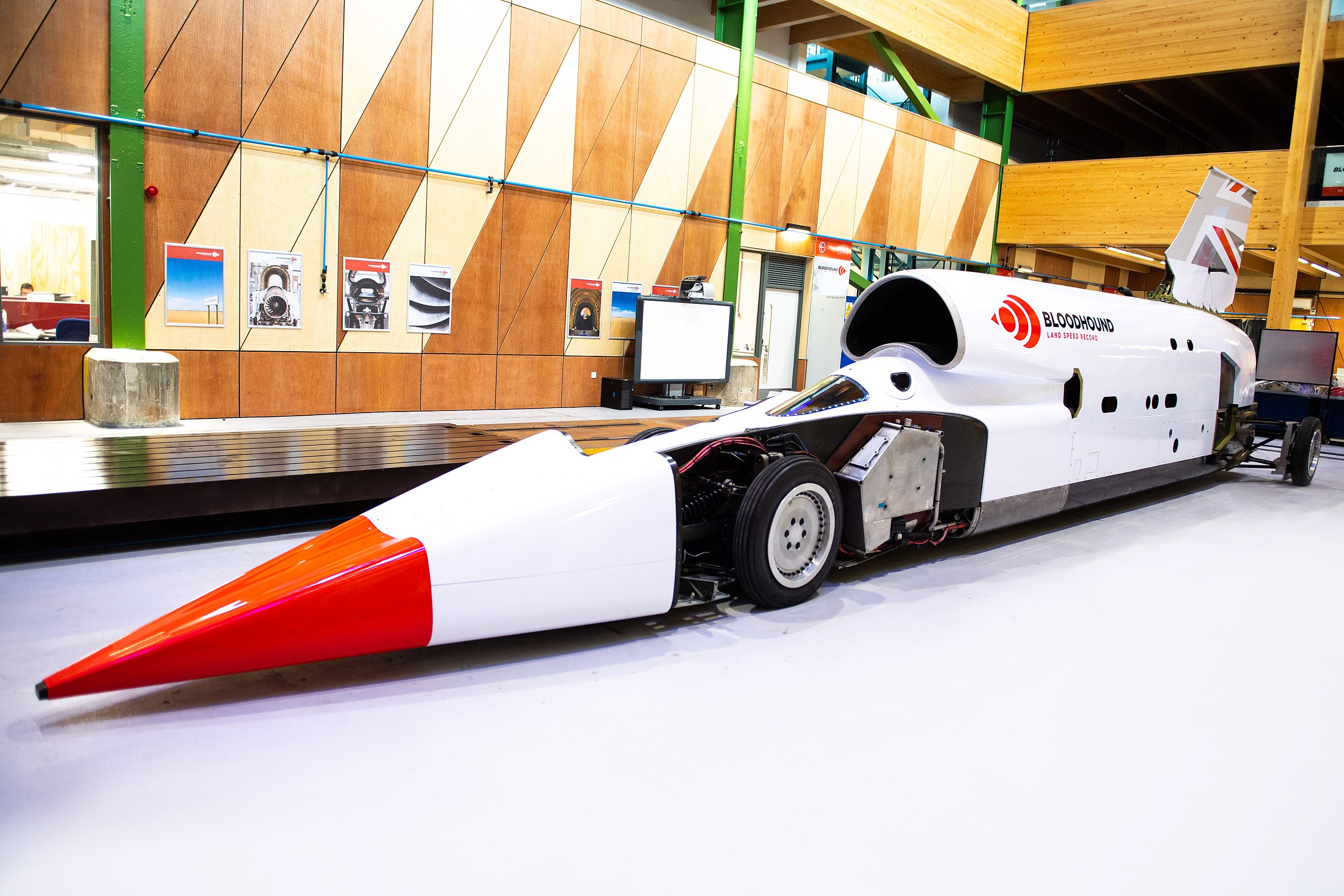
(Credit: Jules1982, via Wikimedia Commons)
Designed with the audacious goal of surpassing 1,000 mph (1609 km/h), this ongoing project combines a jet engine and a rocket motor to achieve unmatched thrust. Though it has yet to reach its ultimate goal, it managed to reach a top speed of 628 mph (1011 km/h) in November 2019. The project was at least temporarily derailed by the COVID pandemic and is currently seeking a new owner – and a new driver.
Blue Flame (630.388 mph / 1,014.656 km/h)
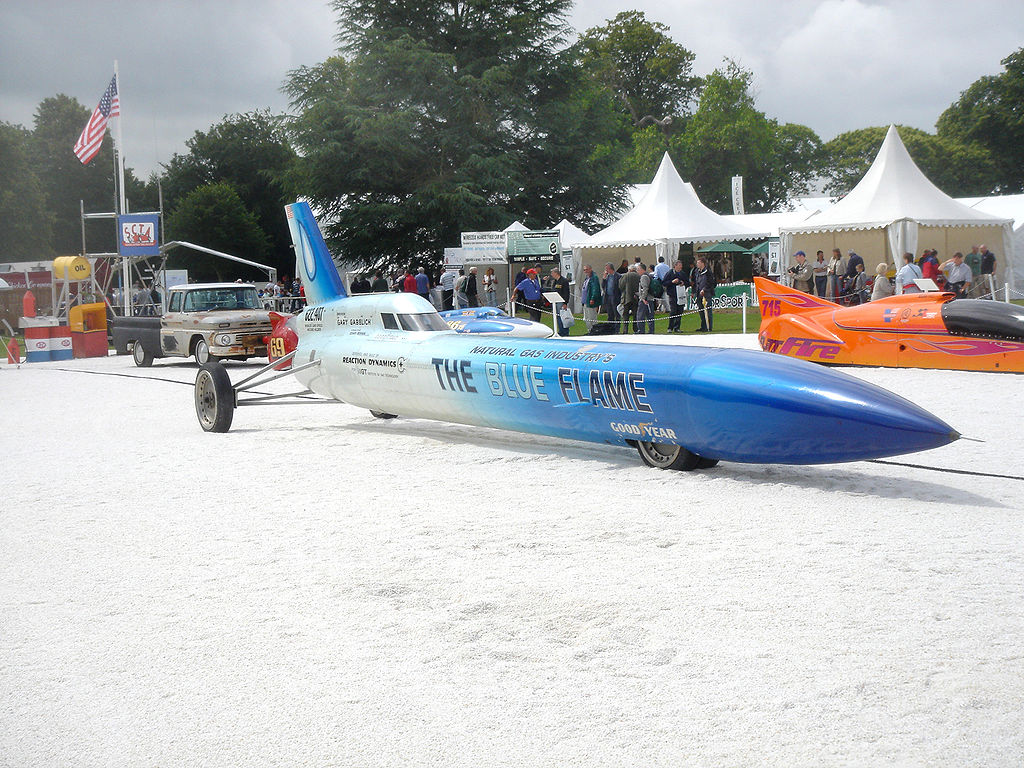
(Credit: Troxx, via Wikipedia)
Driven by Gary Gabelich, the Blue Flame claimed the world land speed record on the Bonneville Salt Flats, Utah, in 1970. Powered by a combination of liquefied natural gas and hydrogen peroxide, the vehicle’s rocket engine represented a significant leap in ecofriendly propulsion and showcased the potential for alternative fuels in high-performance applications. But its record speed would not stand.
ThrustSSC (763.065 mph / 1,227.986 km/h)
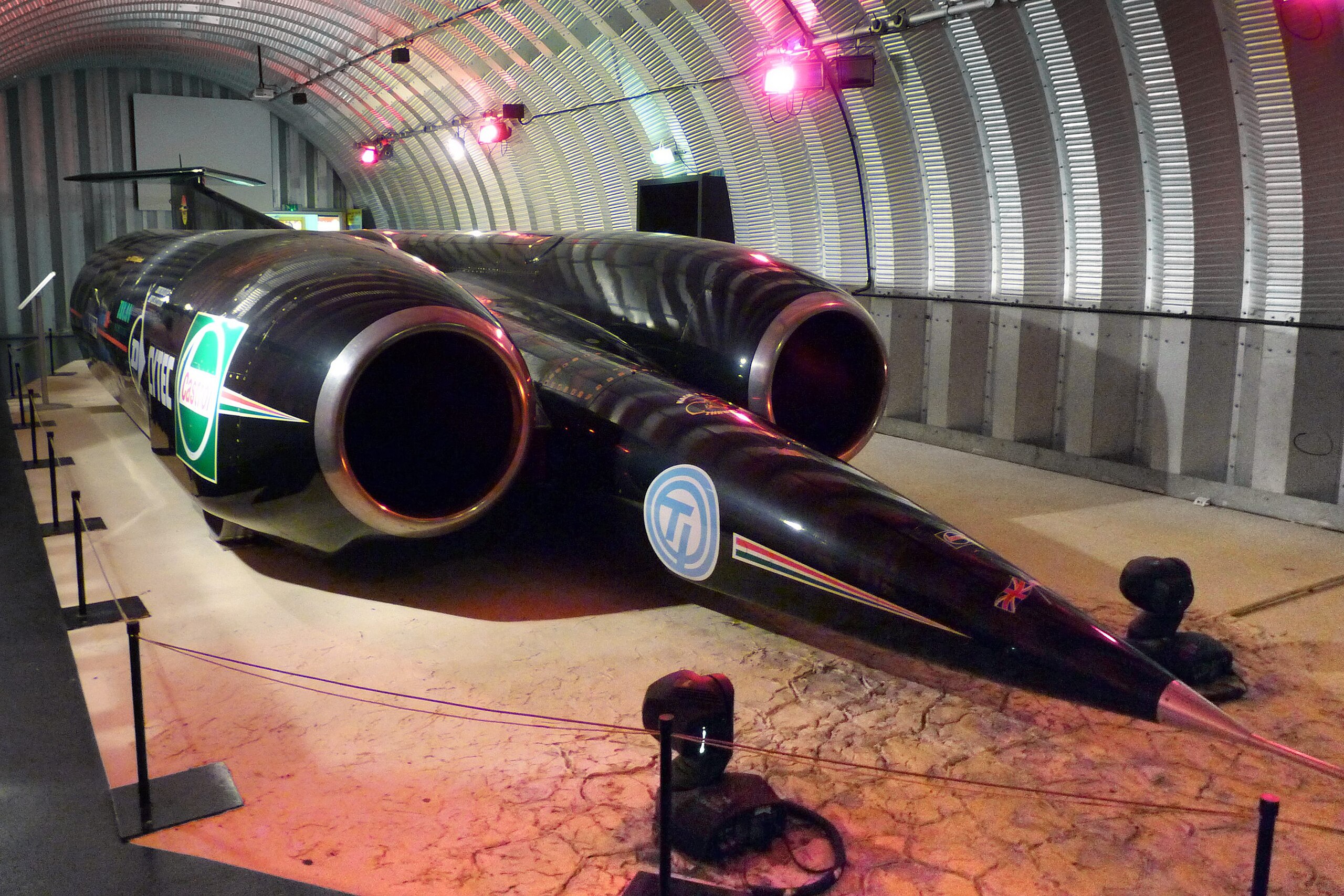
(Credit: Cmglee, via Wikimedia Commons)
The reigning monarch of land speed, this hyper-fast burner etched its name into history, in 1997, by becoming the first land vehicle to exceed the speed of sound. It was driven by Andy Green over a course in the Black Rock Desert of Nevada. Featuring a unique twin-hull structure, it was powered by twin Rolls-Royce Spey turbofan engines, adapted from the F-4 Phantom II jet fighter. It remains to be seen whether another land vehicle will be able to withstand the immense aerodynamic forces created by supersonic speeds.
Ω
Title Image: Postcard image of Thunderbolt, which set the land speed record of 312.2 mph in 1937 at the Bonneville Salt Flats, Utah. (Source: Boston Public Library Tichnor Brothers collection, via Wikimedia Commons)
